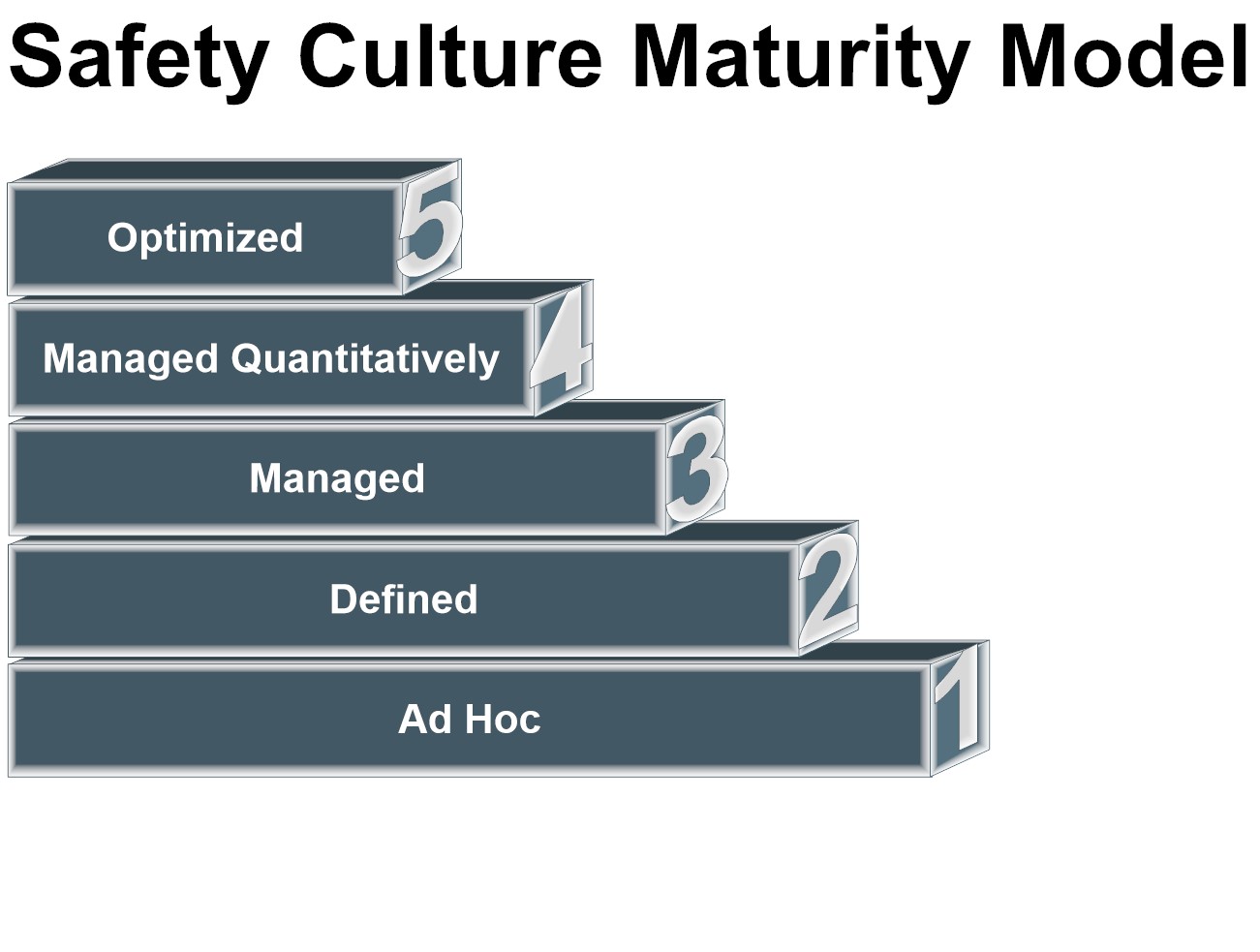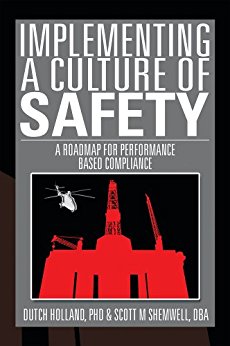A Systemic Method to Perform a Self-Assessment of Your Organization’s Ecosystem Culture of Safety Maturity
(Overview)
Note: The Culture of Safety Maturity Model was originally developed to support the transformation of the Deepwater Oil & Gas sector to one of a Safety Culture following the Deepwater Horizon incident in 2010. It is also applicable to most Critical Infrastructure industrial asset portfolios as well.

Introduction
Over the past few years, the oil and gas industry has come under greater scrutiny regarding its safety practices. Nowhere is this more important than in the US federal waters where the Safety and Environmental Management Systems (SEMS) requirements are now in place. What is not readily known is that it is expected that SEMS regulations will become more universal and that suppliers and vendors must also adhere to SEMS when working for oil & gas companies operating under the SEMS regulations.
The Safety Culture and its implementation is also useful for all Critical Infrastructure sectors. It should not take longer than ten minutes to complete this self assessment.
The COS Maturity Model
The Business Case for a Systemic Safety Culture
In 2014, The Rapid Response Institute and its partners published the first Culture of Safety Maturity model as part of its Systemic Safety Culture Implementation process. Much of this model is developed in our book, Implementing a Culture of Safety–to our knowledge also this first on this subject specifically for the oil and gas sector.
Our maturity model has been used extensively since then and is now available online. This page and its links should provide you with the information necessary to conduct a self assessment and begin the implementation process.

Five Steps
The COS Maturity Model is a five-step model similar to the approach that others have used to describe the maturity of business and technical processes. It provides the principles and practices underlying the investment COS and is intended to provide organizations with a logical methodology for making Safety Culture implementation decisions.
- Ad Hoc–Organization depends on capable people to ensure safety with little to no COS documentation. Minimal Value and the organization cannot be counted on to follow COS Characteristics.
- Defined--Organization has some defined COS tasks, roles, and some documentation. Low value and the organization cannot be counted on to follow COS Characteristics.
- Managed–Organization makes conscious effort to explicitly manage the COS. Some to moderate value and the organization can sometimes be counted on to follow COS Characteristics.
- Managed Quantitatively–Efforts to manage COS excellent and measurable. Moderate to high value and the organization can usually be counted on to follow COS Characteristics
- Optimized–Organization rigorously manages the COS and under continuous improvement. High value and the organization can be counted on to follow COS Characteristics
It is important to realize that each organization’s ecosystem may include all levels of COS maturity. This highly dependent on the maturity of individual firms/projects and must be managed accordingly.
Value Proposition
As with any project or implementation plan, a value proposition must be developed along with a business case. A brief summary of value follows (from the highest):
Optimized–High Value to the Safety Performance of the Organization/Ecosystem. Field operations can be counted on to follow COS Tenets/Values.
Managed Quantitatively–Moderate to High Value to the Safety Performance of the Organization/Ecosystem. Field operations can usually be counted on the follow COS Tenets/Values.
Managed–Some to Moderate Value to the Safety Performance of the Organization/Ecosystem. Field operations can sometimes be counted on to follow COS Tenets/Values.
Defined–Low Value to the Safety Performance of the Organization/Ecosystem. Field operations CANNOT be counted on to follow COS Tenets/Values.
Ad Hoc–Zero to Negative Value to the Safety Performance of the Organization/Ecosystem. Field operations CANNOT be counted on to follow COS Tenets/Values.
Note: Field operations is defined as the sum total of all individuals and processes in support revenue production and/or operational cost management.
It is important to understand that the value of Systemic Safety is not about just the cost of an incident but the overall Health of the organization/ecosystem, including the License to Operate/Ability to Contract as well as perceptions by Markets and Public constituencies.
Self Assessment
Where does your company’s Culture of Safety (COS) rank against industry peers? Take this brief survey and find out. No cost—no obligation and you opinion is highly valued. We estimate it will not take longer than ten minutes to complete this survey.
Over the past few years, the oil and gas industry has come under greater scrutiny regarding its safety practices. Nowhere is this more important than in the US federal waters where the Safety and Environmental Management Systems (SEMS) requirements are now in place.
What is not readily known is that it is expected that SEMS regulations will become more universal and that suppliers and vendors must also adhere to SEMS when working for oil & gas companies operating under the SEMS regulations.
Roadmap
Read the original book that led the industry in the Safety Culture transformation.
Implementation Services
Our full capabilities to help you transform to a Safety Culture.
Methodology
See the Table of Contents for our Two Phase Culture of Safety Transformation.
Cross Cultural Training
Our Cross Cultural Online Serious Game speeds your Transformation.
Workshop
Full On Implementation that gets you to COS rapidly.
Contact Us
Give us a shout to access our full Knowledge Base.

